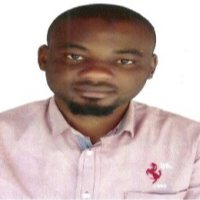
N. M. Tahir
Work place: Department of Mechatronics and System Engineering, Abubakar Tafawa Balewa University Bauchi, Nigeria
E-mail: nuratahir85@gmail.com
Website:
Research Interests: Control Theory
Biography
Nura Musa Tahir received the B.Eng. degree in Electrical Engineering from Bayero University, Kano in 2012 and M.Eng. Degree in Mechatronics and Automatic Control from the Universiti Teknologi Malaysia in 2016. He has been involved in research at Mechatronics systems and Robotics Laboratory in Universiti Teknologi Malaysia on vibration control, robotics and Mechatronics system design. He has been a lecturer at the Department of mechatronic and system Engineering, Abubakar Tafawa Balewa University, Bauchi Nigeria since 2014. His main research interests include Vibration Control, Mechatronics Systems Design, Control System Design, and Robotics.
Author Articles
Off-line Handwritten Signature Verification System: Artificial Neural Network Approach
By N. M. Tahir Adam N. Ausat Usman I. Bature Kamal A. Abubakar Ibrahim Gambo
DOI: https://doi.org/10.5815/ijisa.2021.01.04, Pub. Date: 8 Feb. 2021
Nowadays, it is evident that signature is commonly used for personal verification, this justifies the necessity for an Automatic Verification System (AVS). Based on the application, verification could either be achieved Offline or Online. An online system uses the signature’s dynamic information; such information is captured at the instant the signature is generated. An offline system, on the other hand, uses an image (the signature is scanned). In this paper, some set of simple shaped geometric features are used in achieving offline Verification of signatures. These features include Baseline Slant Angle (BSA), Aspect Ratio (AR), and Normalized Area (NA), Center of Gravity as well as the line’s Slope that joins the Center of Gravities of the signature’s image two splits. Before the features extraction, a signature preprocessing is necessary to segregate its parts as well as to eliminate any available spurious noise. Primarily, System training is achieved via a signature record which was acquired from personalities whose signatures had to be validated through the system. An average signature is acquired for each subject as a result of incorporating the aforementioned features which were derived from a sample set of the subject’s true signatures. Therefore, a signature functions as the prototype for authentication against a requested test signature. The similarity measure within the feature space between the two signatures is determined by Euclidian distance. If the Euclidian distance is lower than a set threshold (i.e. analogous to the minimum acceptable degree of similarity), the test signature is certified as that of the claiming subject otherwise detected as a forgery. Details on the stated features, pre-processing, implementation, and the results are presented in this work.
[...] Read more.Image Recognition Based Autonomous Driving: A Deep Learning Approach
By N. M. Tahir U. I. Bature K. A. Abubakar M. A. Baba S. M. Yarima
DOI: https://doi.org/10.5815/ijem.2020.06.02, Pub. Date: 8 Dec. 2020
Autonomous vehicle (AV) is a broad field in artificial intelligence which has seen monumental growth in the past decade and this had a significant impact in bridging the gap between the capability the intelligence of human and the efficiency of machines. With millions of people losing their lives, or have being a victim of road traffic accidents. There is a need to find a suitable algorithm for a navigation system in an autonomous vehicle with the purpose of help mitigate the traffic rule violation that most human drivers make that lead leads to traffic accidents. With both researchers and enthusiasts developing several algorithms for AVs, this field has been split into several modules which continually broaden the scope of AV’s technology. In this paper, we focus on the lane navigation which has an important part of the AV movement on the road. Here lane decision making is optimized by using deep learning techniques in creating a Neural Network model that focuses on generating steering commands by taking an image the road mapped out with lane markings. The navigation aid is a front-facing camera mounted and images from the camera are used to compute steering commands. The end to end learning scheme was developed by Nvidia cooperation to train a model to compute steering command from a front-facing camera. The model does not focus on detecting the lane but only generating the appropriate command for steering AVs’ on the road. This focus on one objective of the model helps in maximizing the potential of better accuracy in lane navigation of our AVs. The modeled car navigates through the designed lanes accurately with the level of intelligence the car shows in maneuvering through the lanes shows this method is more suitable in lane navigation.
[...] Read more.Other Articles
Subscribe to receive issue release notifications and newsletters from MECS Press journals